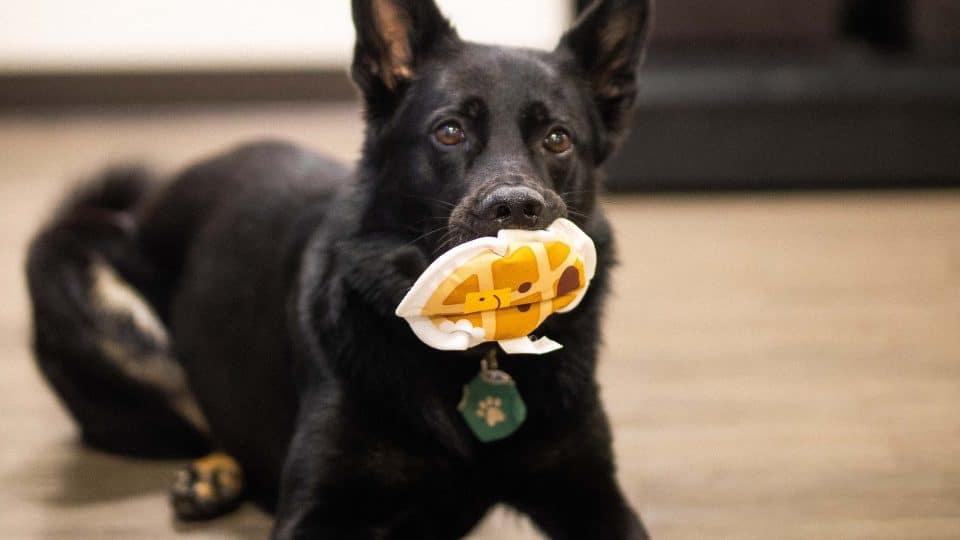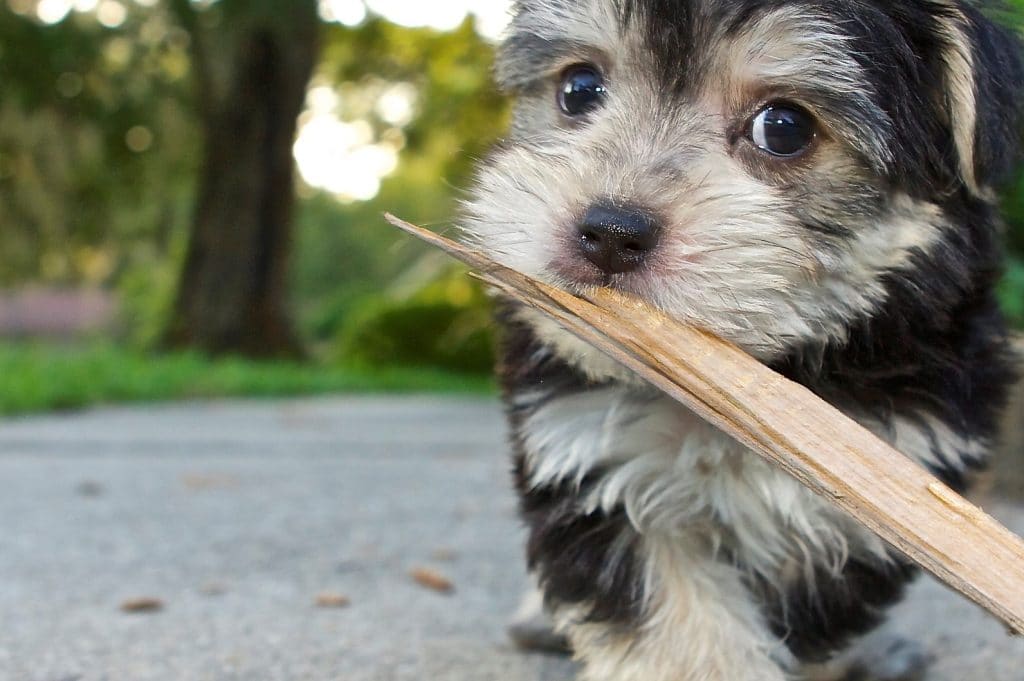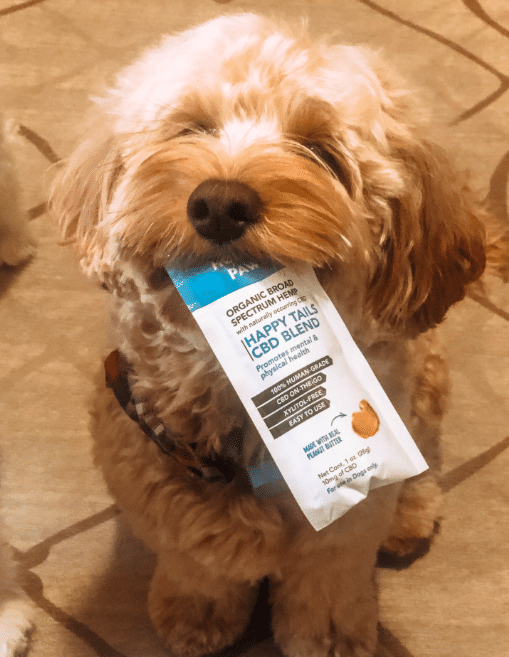Teaching a dog to ‘drop’ or ‘drop it’ is such a fundamental skill, but it’s easily overlooked. I learned this the hard way!
I’ve always been what some might call ‘dog-obsessed’. Even before I became a professional dog trainer, I stalked the local dog park and if a floof crossed my path, all rational thoughts gave way to one overwhelming motivation: Must. Pet. Dog. Friends with dogs were my favourite (I even once dated someone for several months because I loved their dog. Them, not so much.)
Until Herbert came over for a weekend stay, I thought I had the amateur dog whisperer thing under control. But Herbert had my number. A tiny ball of energy, he chose one favourite activity that weekend and wouldn’t let it go. Literally.
For Herbert, my home was a wonderland of stuff to put in his mouth. Remote controls, shoes, hair bands, blankets, socks, underwear—everything ended up between those sharp little teeth.
I did the worst thing a doggy guardian can possibly do in this situation: I chased him. The more I chased Herbert, the more he played keep-away. The more he played keep-away, the more fun Herbert had. By the end of the weekend, I was exhausted and living in a war zone of gnawed shoes and torn socks.
If only I’d known how to teach a dog to drop it.
I’ve never forgotten the lesson Herbert taught me: drop is a crucial cue, especially for puppies and adolescents. It’s the flip-side of ‘leave it’, which asks a dog not to pick something up that they are interested in.
Drop, often known as ‘drop it’, asks a dog to let something go once they have it. A strong drop can get a dog to release just about any object, no chasing required.
How To Teach A Dog To Drop It
One of the best things about teaching a dog to drop is that it’s playful. If your dog loves to play tug or to hold a ball in their mouth, you’re already ahead of the game.
Step 1: Trade your dog a toy for a treat
During play, when your dog has a toy in their mouth, say the word ‘drop’ and then immediately pop a treat in their mouth (do not wait for them to open their mouth on their own). In order to eat the treat, the dog has to drop the item.
Wait for them to finish eating, then play again. Repeat at least five times.
Step 2: Try your ‘drop’ cue during play
When your dog has a toy, say ‘drop’ and wait two to three seconds for their mouth to open
If they open it, mark the moment with a clicker or the word ‘yes’ then reward them with a treat.
If they don’t open their mouth, trade them for the toy by popping a treat in their mouth. Repeat, repeat, repeat.
Step 3: Practise the’ drop’ cue randomly
Try the cue randomly when your dog isn’t in the middle of a play session.
The next time your dog has something in their mouth, ask them to ‘drop’. When they do, click/mark the moment and reward them with a treat or with another round of tug.
For this step, the object could be a toy or any other household item that doesn’t hold special value for your pup.
Help! My Dog Doesn’t Want To Listen
- If your dog isn’t super toy-motivated, try using a rag soaked in tasty chicken broth (let it dry before you play)
- Be sure to have plenty of practice with less-exciting objects before asking your dog to drop your favourite pair of underwear or something equally important. The more forbidden the object, the higher its value. And the higher its value, the less inclined your dog will be to drop the item.
- Resist the urge to chase your dog!
If your drop cue isn’t working, grab a treat. Slowly approach your pup and exchange a treat for the object. If your dog won’t let you get close enough to trade them, try making a trail of treats on the floor as close to them as you can.
Most dogs won’t be able to resist the delicious food on the ground and as they follow the trail, you’ll have the chance to grab the object they stole.
Responding To A Dog’s Warnings
If your dog growls or lunges at you when they have the object in their mouth, back off immediately. They’re attempting to inform you they may bite to keep the item. This is behaviour is known as resource guarding.
If the item they have isn’t dangerous, let them keep it until they lose interest and drop it naturally.
If the item is dangerous, grab any super-amazing food you can find in your fridge—pizza, hamburgers, or anything else your dog doesn’t usually get—and throw them a piece. They should drop the item for the food.
As they eat, continue to throw pieces of food farther and farther away from the object so that they can follow it.
Once they are far enough away (preferably in another room) you safely grab the dangerous item.
If this type of behaviour is occurring often, your dog will need training to overcome it.
Further reading
- Arousal Biting: How to Stop “Mouthing” Behavior in Older Dogs
- 8 Steps to Teaching Your Dog a Super-Strength “Leave It” Command
- This Is Why Some Dogs Sneeze When They Play
- Dog Speak: Understanding What Your Dog is Telling You





